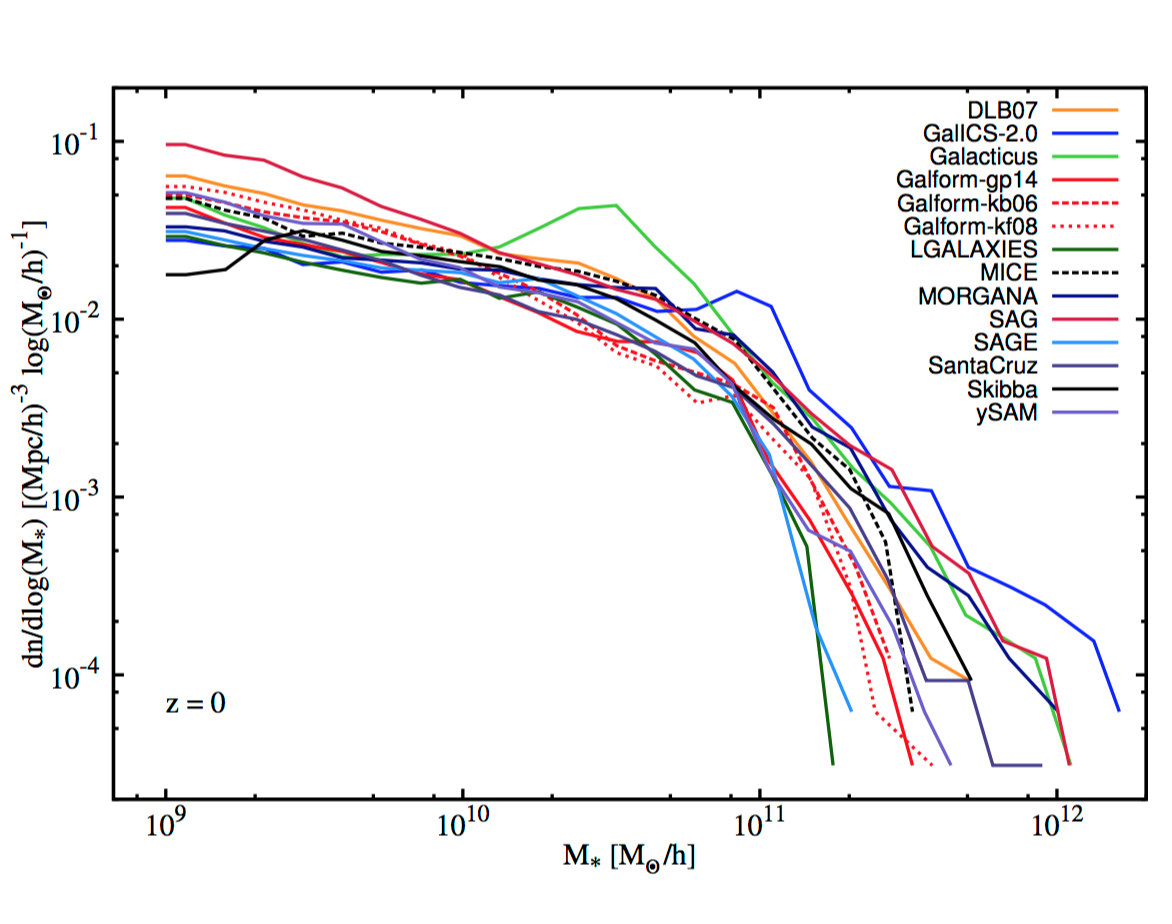Abstract
We present a comparison of 14 galaxy formation models: 12 different semi-analytical models and 2 halo occupation distribution models for galaxy formation based upon the same cosmological simulation and merger tree information derived from it. The participating codes have proven to be very successful in their own right but they have all been calibrated independently using various observational data sets, stellar models, and merger trees. In this paper, we apply them without recalibration and this leads to a wide variety of predictions for the stellar mass function, specific star formation rates, stellar-to-halo mass ratios, and the abundance of orphan galaxies. The scatter is much larger than seen in previous comparison studies primarily because the codes have been used outside of their native environment within which they are well tested and calibrated. The purpose of the `nIFTy comparison of galaxy formation models' is to bring together as many different galaxy formation modellers as possible and to investigate a common approach to model calibration. This paper provides a unified description for all participating models and presents the initial, uncalibrated comparison as a baseline for our future studies where we will develop a common calibration framework and address the extent to which that reduces the scatter in the model predictions seen here.

